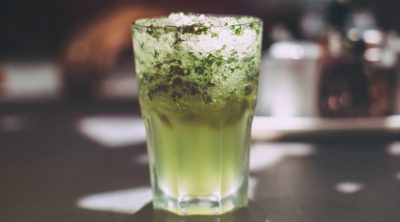
Of all the ideas that man has come up with, alcohol ranks way up there with the wheel and sliced bread, don’t you think? And moreover, should you be able to make your own? Now that would seriously be worth living for, wouldn’t it? Take a look at some simple instructions on how to make your own vodka.
Russia is known as the ‘Home of Vodka’. The reason why this drink became so popular here, is because it never froze even in the harsh winters due to its high alcohol content.
As far as useful skills to pick up go, learning how to make vodka is something likely to stand you in good stead. Having said that, it can be a bit tricky, requires a good deal of care, and some amount of experience, should you want to end up with a product of quality. Traditionally, vodka is distilled from grains or potatoes, and its origins are associated with the eastern parts of Europe, predominantly Russia, Poland, and Ukraine. But it has since gained worldwide popularity with some of the biggest beverage companies boasting of multiple vodka brands. It forms the basis of a number of classical cocktails, such as Bloody Mary, Screwdriver, and Sex on the Beach, to say nothing of James Bond’s drink of choice, the Vodka Martini. Best of all, vodka need not be aged―so it’s less time-consuming, than, for instance, making homemade wine.
Without any further delay, let’s get down to the steps that are required to be followed to make homemade potato vodka, and the same can be used for a grain mash too.
Making Vodka
Finalize the Ingredients
The first and foremost thing you need to do is determine the ingredients that you will be using. You could choose between grains or potatoes. The aim is to use an ingredient that contains either starch or sugar, so that it goes on to produce alcohol.
A mash needs to be made which has active enzymes that breaks down the grain’s/potatoes’ starches, and results in fermentable sugars. For the mash, take this into consideration. According to the ingredient, you will need to determine if additional enzymes are required so that the starch is converted into sugar. If using grains and potatoes, additional enzymes would be required in the process. On the other hand, malted whole grains like malted barley or malted wheat are already rich in natural enzymes. Refined sugar and molasses also do not require additional enzymes, as sugar is already present in the ingredient.
If you decide on using potatoes, you would need to buy a food-grade amylase enzyme powder from the store. This has to be added to the mash to convert the starch into fermentable sugar. The same would not be required when using malted barley or malted wheat. Nevertheless, remember that, over here, the starches must first be gelatinized for the enzymes to break them down. Potatoes, wheat, and barley would gelatanize at around 150° F. Make sure that the temperature does not exceed this figure, or most the enzymes will be destroyed.
Make the Mash
Wheat Mash
Things Required:
- Metal Pot with Lid (at least 40 liters capacity)
- Water, 23 liters
- Dry, Flaked Wheat, 7.6 liters
- Crushed Wheat Malt, 3.8 liters
Procedure:
Heat the water in a metal pot to around 165° F. Add the dry, flaked wheat, and stir. Add the crushed wheat malt to this. At this point, make sure that the temperature is around 150° F. Once this is done, cover the mixture and let it rest for about 2 hours, though stirring it occasionally. This is the time when the starches will convert into fermentable sugars. Here, the mixture also becomes less sticky. Leave this overnight to cool at a temperature of around 80° F.
Potato Mash
Things Required:
- Potatoes, 20 lb.
- Water, 23 liters
- Crushed, Malted Barley/Wheat, 2 lb.
Procedure:
Boil the unpeeled potatoes for about one hour. This is when it gets gelatinized. Drain out the water and thoroughly mash the potatoes. Now, heat these potatoes in 23 liters of fresh water, at a temperature of around 150° F. Add the malted barley/wheat, and stir well. Stir this mixture occasionally for the next 2 hours. Leave this overnight to cool at a temperature of around 80° F.
Ferment the Mash
This is an important step in your quest for making the perfect vodka. The process usually lasts for 4 – 5 days, and the utensils and area used need to be very clean in order to avoid any contamination. You can even sanitize the area and utensils with an oxidative cleaner available in stores.
Now you will need to set up an airlock system, so that carbon dioxide can escape without letting in any oxygen. Ideally, look to ferment batches of 15 liters of strained mash, each in 30-liter buckets. These buckets need to be covered with lids, but not be airtight, as the carbon dioxide that is produced will create immense pressure. Or, you could cover the buckets with a clean cloth to keep out any dirt or insects. Using a fine-mesh strainer, strain the liquid from the mash into the fermentation vessels. Do this keeping a fair distance, so that the yeast is well aerated and gets enough oxygen to be able to ferment properly.
Hydrate yeast and add it to this liquid, and keep stirring so as to evenly disperse the yeast. Keep this in a room at a temperature of around 80° F. Collect the fermented liquid in sanitized vessels. Make sure that you let the yeast sediment remain behind here.
Distill the Fermented Liquid
For this step, you first need to choose the still. Either use a column or a pot still. If you know how to build one, well and good. Otherwise, simply purchase one from the store, so that you are sure the process won’t collapse.
Heat the fermented liquid (wash) to a temperature of around 175° F. Here, make sure that this temperature does not go up to anywhere near 210° F, which is the boiling point of water. The trick here is to get to a temperature greater than the boiling point of alcohol, while remaining below the temperature that boils water. As a result, vaporized alcohol travels up the still. This vaporized alcohol then condenses in the areas of the still that are cooled by water.
An important step here is to discard at least the first 30 milliliters of distillate for every 20 liters of fermented liquid. This first part is filled with harmful methanol and fickle chemicals, that should not be consumed. The remaining distillate will contain alcohol, water, along with some other compounds. Again remember, if the temperature goes above the boiling point of water, you will be left with tails which have fusel alcohols, and are simply not needed.
Now you’d need a hydrometer. This is so that you can check the level of alcohol content and purity of the distillate. Cool a little distillate to around 70° F and check the alcohol level. It should not be less than 40% or greater than 50% alcohol content. It is recommended to re-distill the distillate a few times so that you are left with highly pure vodka.
Now, you can put the distillate through a carbon filter so that fickle aromas and flavors are removed. This would also purify the distillate. You can add purified water to this distillate to get the required alcohol content percentage. Keep checking with the hydrometer. Once done, bottle this and seal using caps or corks.

Interesting Facts About Vodka
- Vodka is the purest alcoholic drink in the world.
- Vodka has a shelf-life of only 1 year.
- Cold vodka hides its true taste.
- 1 liter of vodka weighs 953 grams.
- Europe recognizes 37.5% alcohol content as vodka. The United States, on the other hand, recognizes 40% alcohol content as vodka.
- Vodka is a great cleaner and disinfectant.
- The most common flavors in vodka are red pepper, ginger, vanilla, unsweetened chocolate, cinnamon, and many fruit flavors.
- 1 ounce of vodka comes with 65 calories.
You could even experiment with flavors to infuse, and come up with your own version of flavored vodka―try orange peel, lemon or chili, for an interesting blend. Cheers!


